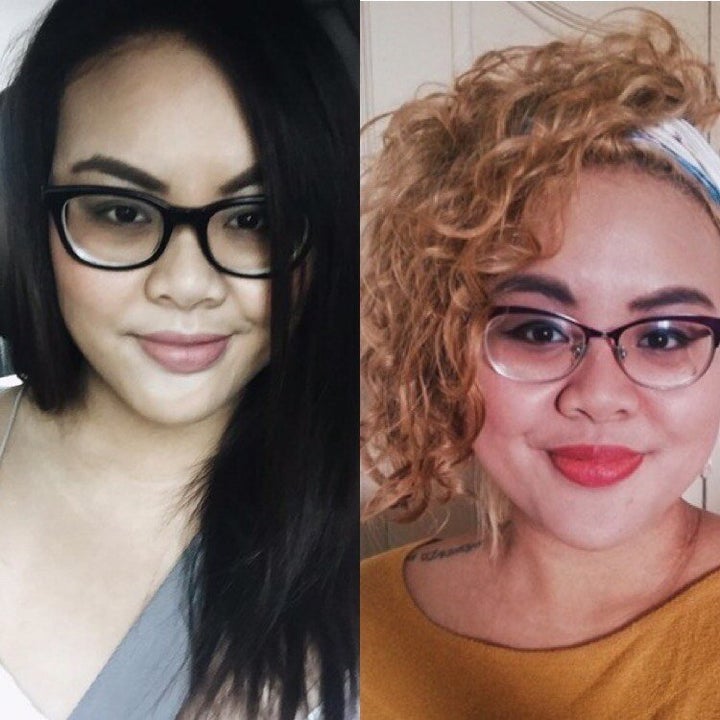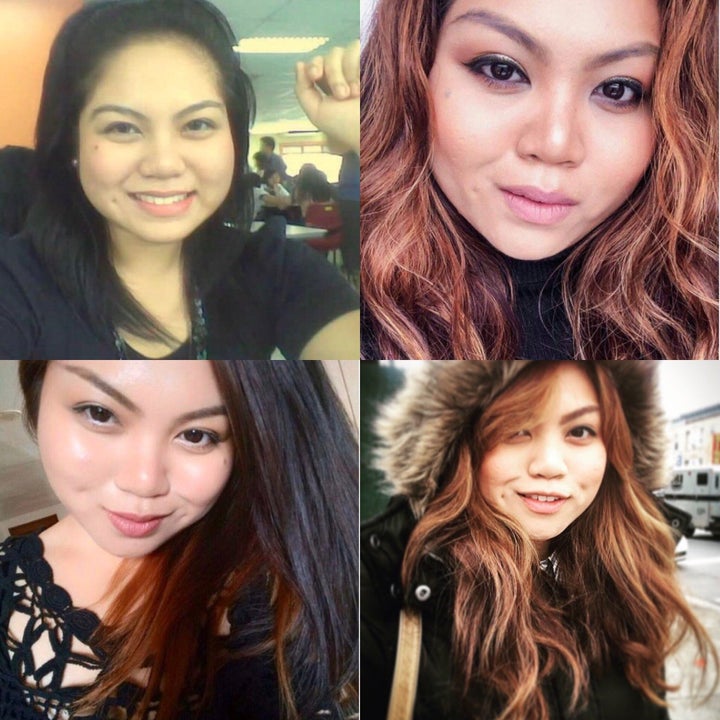
It was December 2004 when I saw my mother’s coarse, wavy, Filipino hair turn sleek and straight after undergoing a “rebonding” treatment.
Hair rebonding, which is a similar process to hair relaxing, is a treatment that chemically alters wavy hair into straight hair. I remember wanting my hair to be as sleek and straight as the women in Korean soap operas I’d watched growing up as a kid in the Philippines, where straight hair is seen as the ultimate beauty standard.
“While straight hair is associated with beauty, curly or wavy hair is associated with undesirability in Filipino culture,” explained E.J.R. David, a Filipino psychology professor and author of books including “Brown Skin, White Minds” who focuses on internalized oppression. David points out that the common Tagalog phrase “kulot salot” (kulot means curly, while salot means plague) “explicitly conveys this sentiment that curly or wavy hair is to be avoided and straightened.”
“To put those with straight hair on a pedestal and make that the standard of what is attractive, desirable and beautiful is illogical,” David said.
Surpassing all logic, most Filipinas I know have told me at least once that beauty is pain. Hair rebonding is no different.
“My whole life, I was shamed for my very Filipina features: wide nose, dark skin and coarse, curly hair. I wanted to change everything about myself,” Emilie Guanzon, a 23-year-old Filipina American, told HuffPost. “I hate the idea, but I hated myself more. I went through with rebonding. I remember the smell of my hair burning as they straightened my hair, section by section, and the excruciating pain I felt every time they pulled my hair back ― I really regret the decision.”
“It fried my hair and made me think the only way I’d be considered beautiful was to have these Eurocentric features, and that would mean changing literally everything about the way I look,” she added. “Most people would say, ‘It’s just hair, it’s not a big deal,’ but to me it was my whole being.”

For most Filipinas who’ve had their hair rebonded, the excruciating pain was worth it because to them, their physical beauty was elevated.
Hair rebonding is a chemical process that permanently breaks down the natural cell structure of one’s hair. It alters natural wavy or curly hair and changes the hair bond to make it straight. Once the rebonding process is finished, it takes years for one’s natural hair to grow back.
Samantha Larot, a 32-year-old Filipina manager of The Courtyard Salon in Benicia, California, shared with HuffPost that “rebonding weakens your hair immensely and can cause it to become very brittle and damaged. Relaxants used in the process are very strong and can cause irritation of the scalp. Moreover, you can’t have any chemical services that require heat for a minimum of four months. A major side effect of hair rebonding is an increase in hair fallout.”
Basically, hair rebonding is a permanent procedure that inevitably destroys natural hair. From an outsider’s perspective, this process could be seen as expensive, drastic and damaging, both physically and mentally.
So then, why do it?
David explained, “Rebonding forces many Filipinas to live up to a standard of beauty that is not natural to them, so many end up engaging in a never-ending process to achieve it, regularly spending their hard-earned money to get chemical treatments or rebonding. It also makes many Filipinas who do not have straight hair feel inferior, less attractive, less desirable and less beautiful. So not only does this phenomenon take a toll on Filipinas’ pockets, it also damages their self-esteem and well-being.”
For many women, like 26-year-old Filipina Kate Heceta, low self-esteem is rooted in painful childhood memories.
“I started rebonding my hair when I was 12 years old,” Heceta told HuffPost. “At the time, I was heavily teased for my curly hair. Kids called my hair rat or bird nest, said I looked like a witch, and told me to go live in the street because my hair made me look like an unhoused person. I was a freshman in high school, and some boys [bullied me for the way my hair looked]. As you can probably imagine, I was really upset and hurt, so my mom let me get my hair rebonded.”
“I kept getting it rebonded until I was 23 years old, the year I decided to embrace my curly hair,” she said. “I deeply regret that I decided to ruin my hair at such a young age. I still sort of blame those boys for doing something so cruel to me that made me rebond my hair, but I also know that the stigma on curly hair contributed to them doing that to me.”

Heceta’s story isn’t unusual in the Philippines, and 28-year-old Filipina immigrant Pauline Mellon, who moved to New York City from the Phillippines, shares a similar story.
“I was born with a full head of hair,” Mellon told HuffPost. “Unlike East Asians that Filipinos look up to, I don’t have jet-black, straight hair. My hair is dark brown, coarse and wavy. When I hit puberty, I was compared to my classmates who had fine, straight hair. My only option was to cut my hair short or have it straightened.”
“We had a neighbor who knew how to relax hair,” Mellon said. “She told me that this would get me noticed, so I said yes. It burnt my scalp. It was so painful. It took at least four hours. I still have a scab that’s too stubborn to heal. My mom then started taking me to salons every six months or so. I did this until I was 18.”
When asked if she regrets doing rebonding her hair, Mellon said, “At first no, because I didn’t know that having wavy hair was acceptable. I’m thankful that hair services in New York City are expensive, and I was not able to have my hair straightened [when I got here]. Nobody made a fuss about it and I even got compliments with my natural waves, which was very surprising to me. If I never left Manila, I would have never appreciated my natural self. I had to unlearn that type of ideology and learned to embrace aesthetic diversity.”

Like Mellon, many Filipinas who’ve lived abroad have had the education and privilege to break the chains of colonialism. David explains, “Similar to the skin-whitening phenomenon and desiring lighter skin tones, the hair rebonding phenomenon and the regard of straight hair as ‘good hair’ and of curly or wavy hair as ‘salot’ (plague) is yet another reflection of anti-blackness, which of course is a legacy of colonialism.”
Often, the traditional beauty standard of light skin, straight hair, and being skinny and petite is what every Filipina strives for. Internalized racism is deeply entrenched in the fabric of Filipino society. Women have grown up in families and neighborhoods that have often been sources of debilitating pain and lifelong trauma instead of offering protection and building self-esteem.
David explains, “We must understand that colonialism has distorted our thoughts and beliefs in many ways, especially our standards of beauty. This distortion has been damaging our culture and our wellbeing for generations now. We’ve been perpetuating these distorted beliefs and passing them down to later generations for a long time. It’s time that we break the cycle.”
Read more about the complicated relationships we have with our hair at My Hair, My Story.